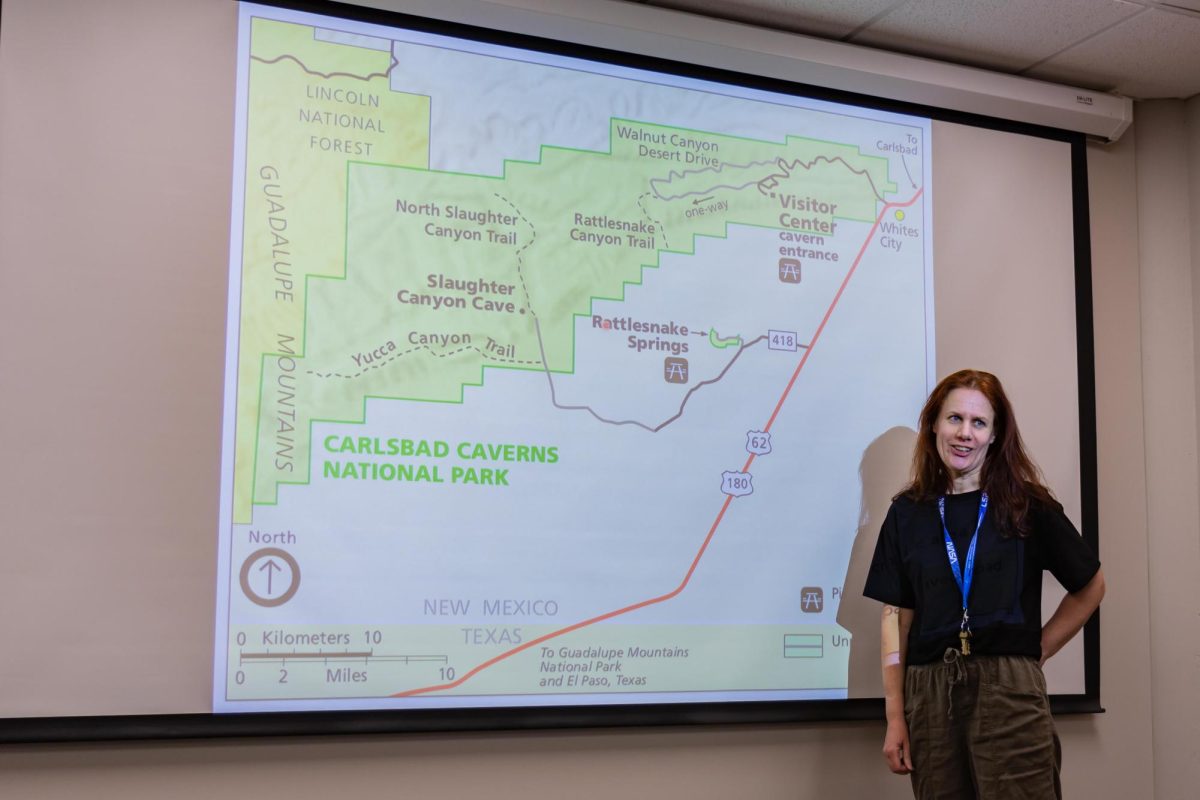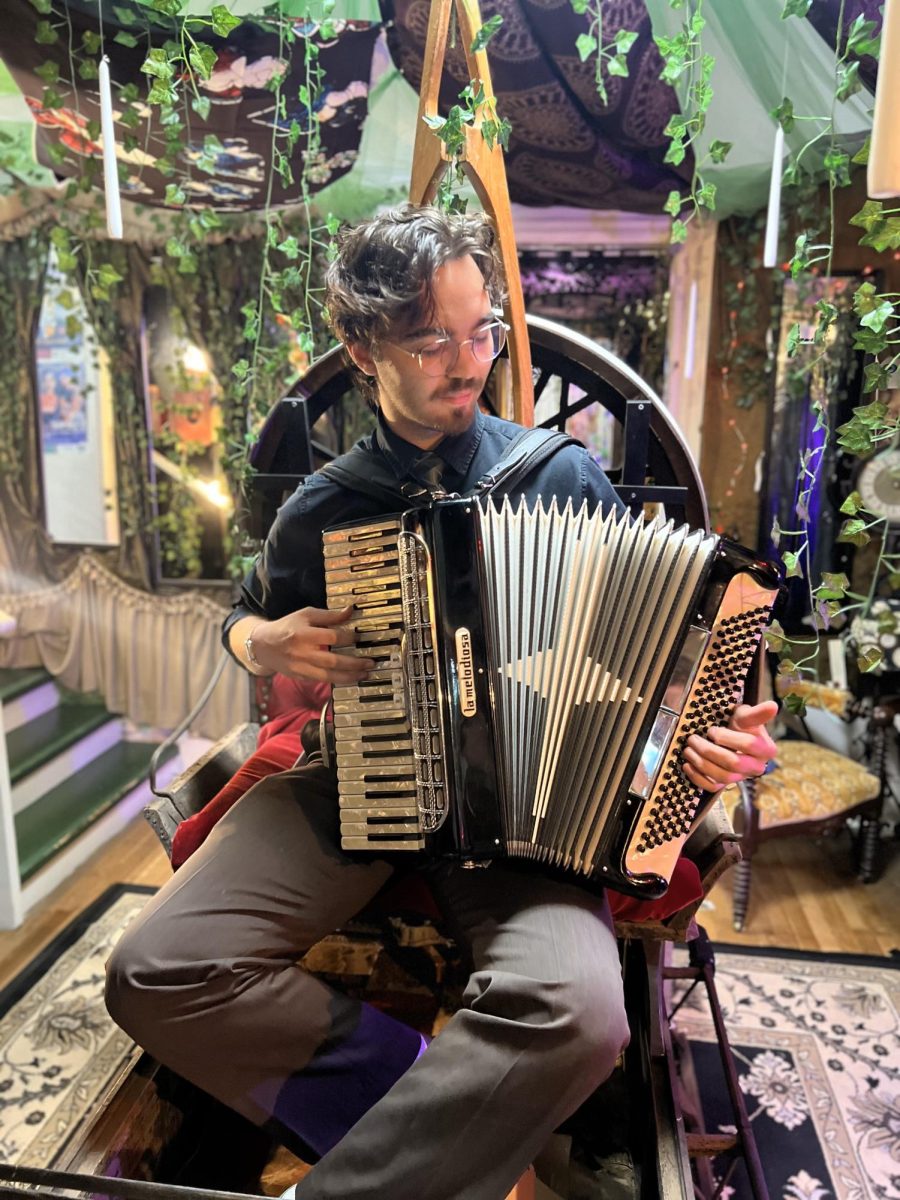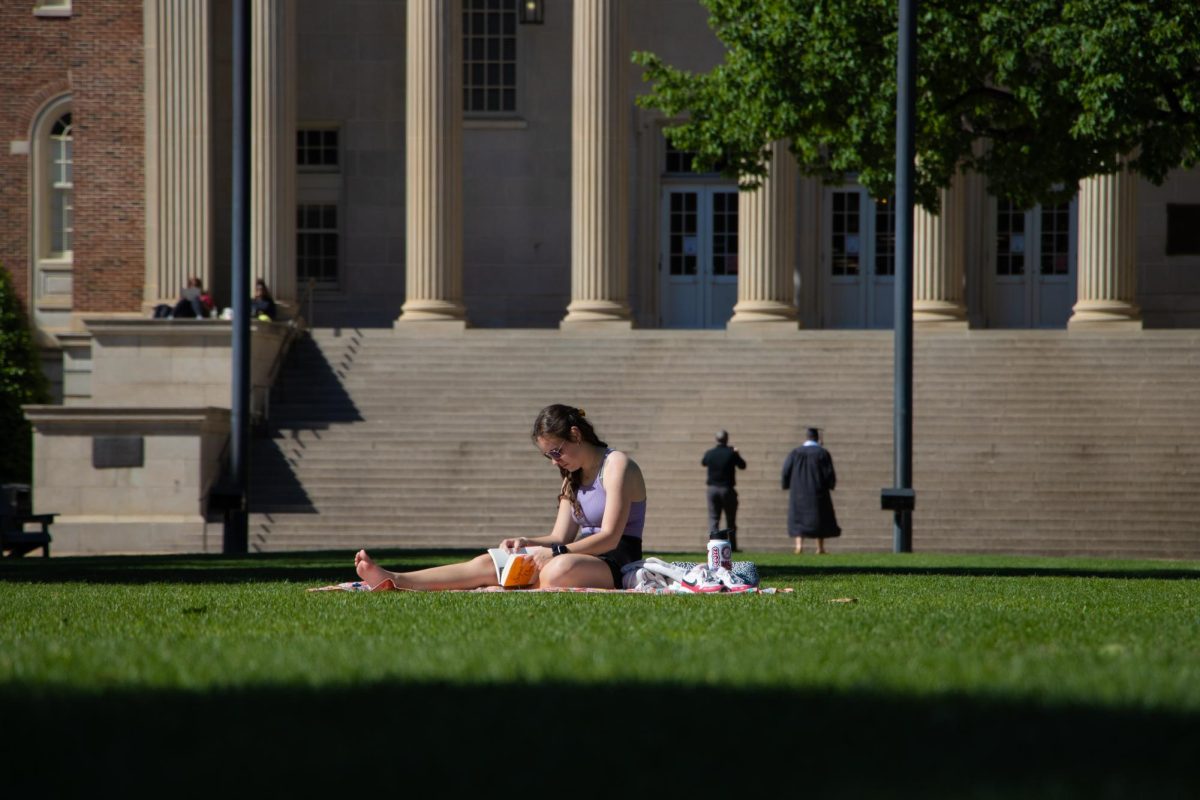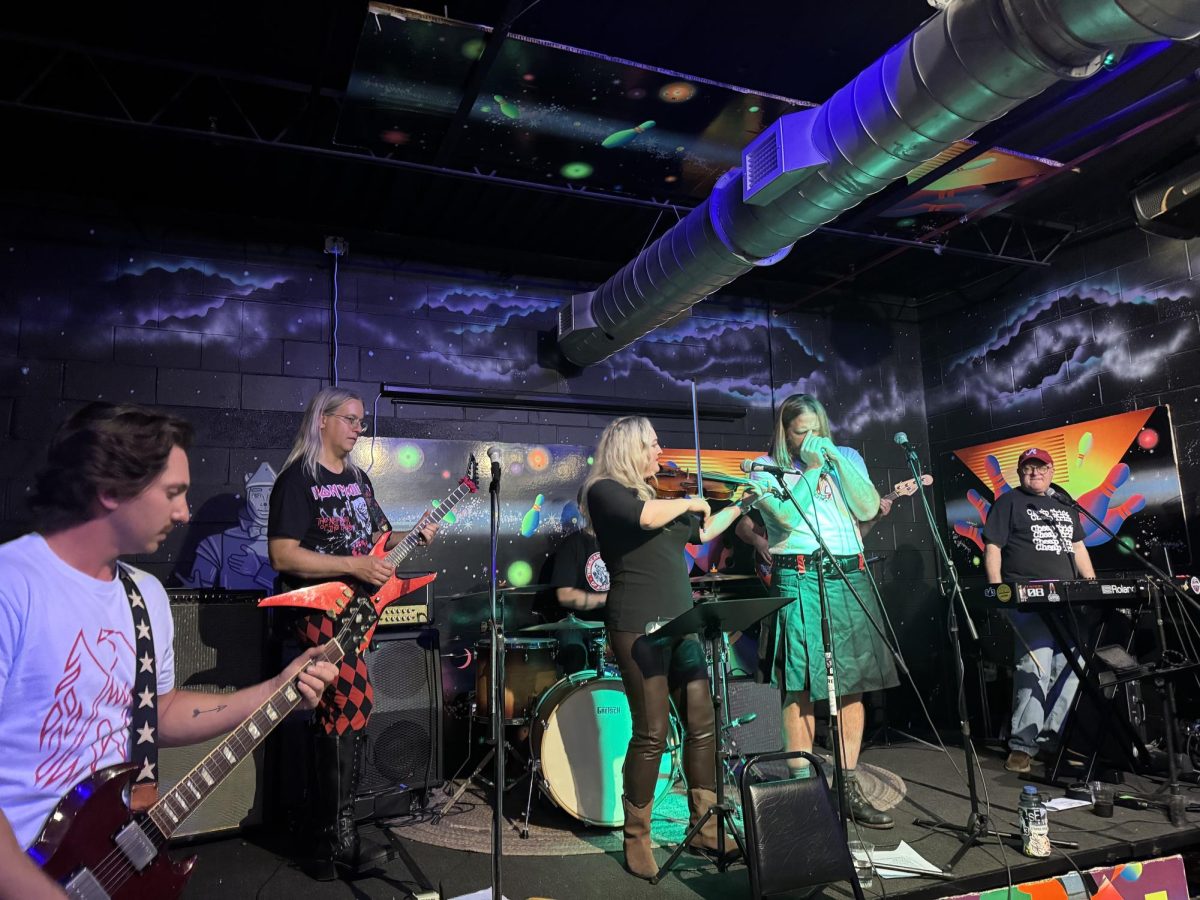Loper Endowed Professor of Geological Sciences Hazel Barton presented some of the details and findings from her exploration of Lechuguilla Cave, one of the longest and deepest caverns in the world. The lecture was given to students in the Cave Appreciation Club, a group of undergraduate and graduate students who explore caves around the country.
Barton explained how her team of speleologists explored the cave and were responsible for charting some of its farthest depths. The findings were documented in her book, “Lechuguilla Cave: Discoveries in a Hidden Splendor,” which was released in 2022.
Max Koether, president of the Cave Appreciation Club and a doctorate candidate studying cave-dwelling microbes, called the meeting to order and introduced Barton to the club. He recalled his experience caving with Barton, including when she helped him out of a cave with a back injury.
“She’s been all over the world. She’s been in films and written books,” Koether said. “So when it comes to mapping caves, doing rope work, doing research work. This is the person to talk to.”
Barton explained her history of caving, starting with her earliest amateur expeditions in her teenage years in England. When she began caving professionally during her graduate studies, the landscape of the profession was much different.
“When I started caving, there were 20 guys for every girl, and I would be on expeditions where I was the only woman,” Barton said. “I’ve spent the last 20 years trying to increase diversity in caving. And I think right now, it’s 50/50, and I’ve been on expeditions where everybody is a woman.”
She specialized in microbiology and has gotten the opportunity to explore caverns across the world, taking samples and charting new territory underground. Lechuguilla Cave, however, posed a unique and fascinating challenge. As a barometric or breathing cave with only one entrance, the tunnels and turns of the cave are particularly complex and lengthy.
Barton explained that barometric caves have to equalize to changes in air pressure on the outside. The wind escaping the cave’s entrance gives them the sensation of “breathing” that earned them their nickname.
“There was a pile of rocks at the bottom of this pit that would come and vibrate when the weather changed,” Barton said. “There’s some big cavity under here where the air is trying to get out. So they just started pulling rocks out, and they dug down about 15 feet, and then one of them literally fell through the pile into the cave.”
Barton said Lechuguilla was formed by convection of reservoir water deep underground. In areas with dissolvable limestone, these currents carve out sophisticated caverns, leaving deposits of acidic residue and gypsum. Lechuguilla Cave is particularly known for its gypsum formations, called chandeliers by cavers, some of which span over 20 feet.
Barton showcased a 3D map of the cavern that showed the miles of tunnels that made up the cavern, including the Chandelier Graveyard, a notorious section where someone was once lost for 24 hours.
“It’s probably the most complex cave passage anywhere in the world,” Barton said.
Barton’s work in Lechuguilla was documented in an episode of National Geographic’s “One Strange Rock” television series. Her work continues to inspire members of the caving community and make breakthroughs in the field of speleology.
“Cavers are a bunch of people that don’t fit in anywhere else, but all have a shared passion for caves,” Barton said. “There’s an instant bond. It’s a community, and I’ve kind of built my identity around it.”









